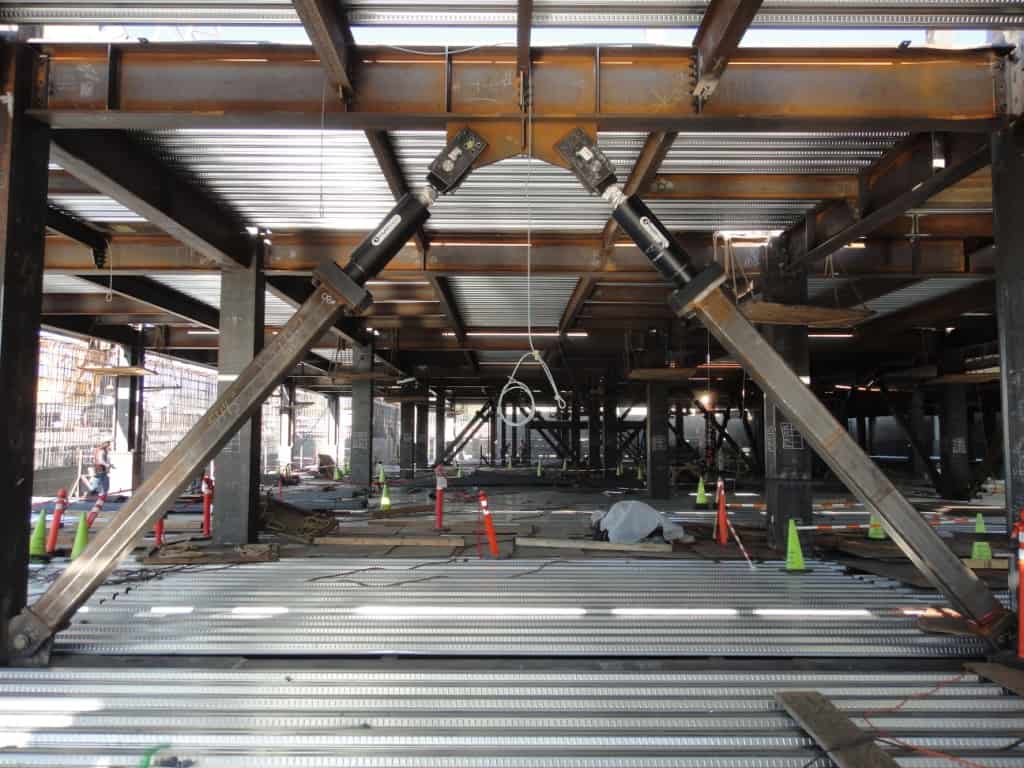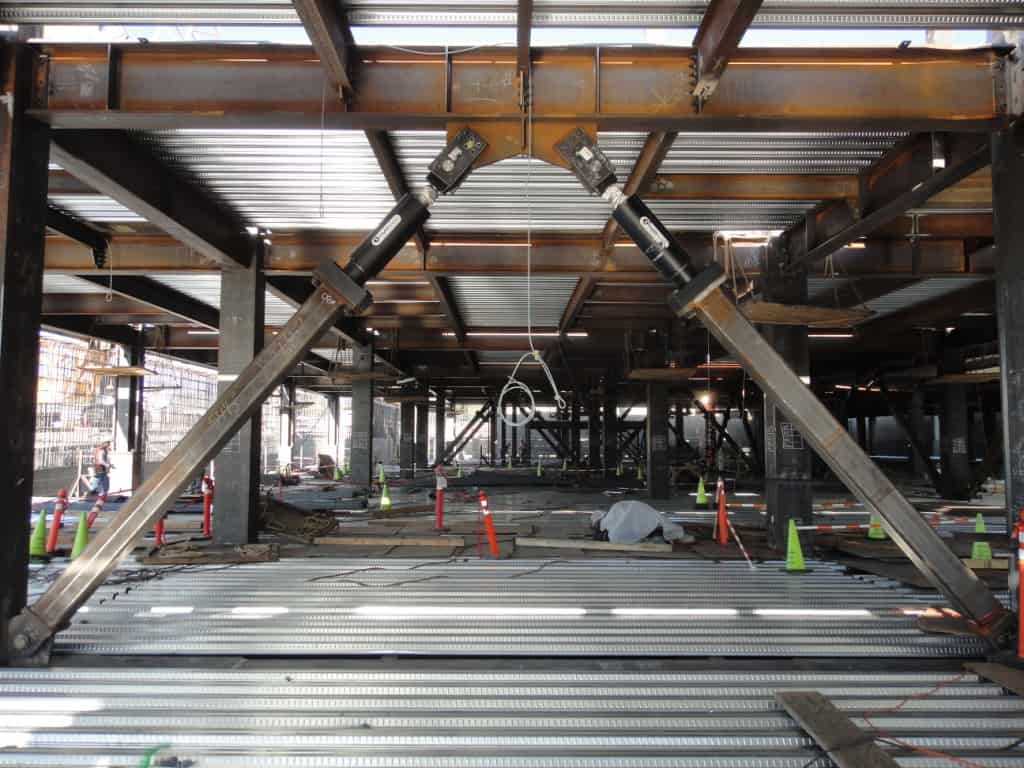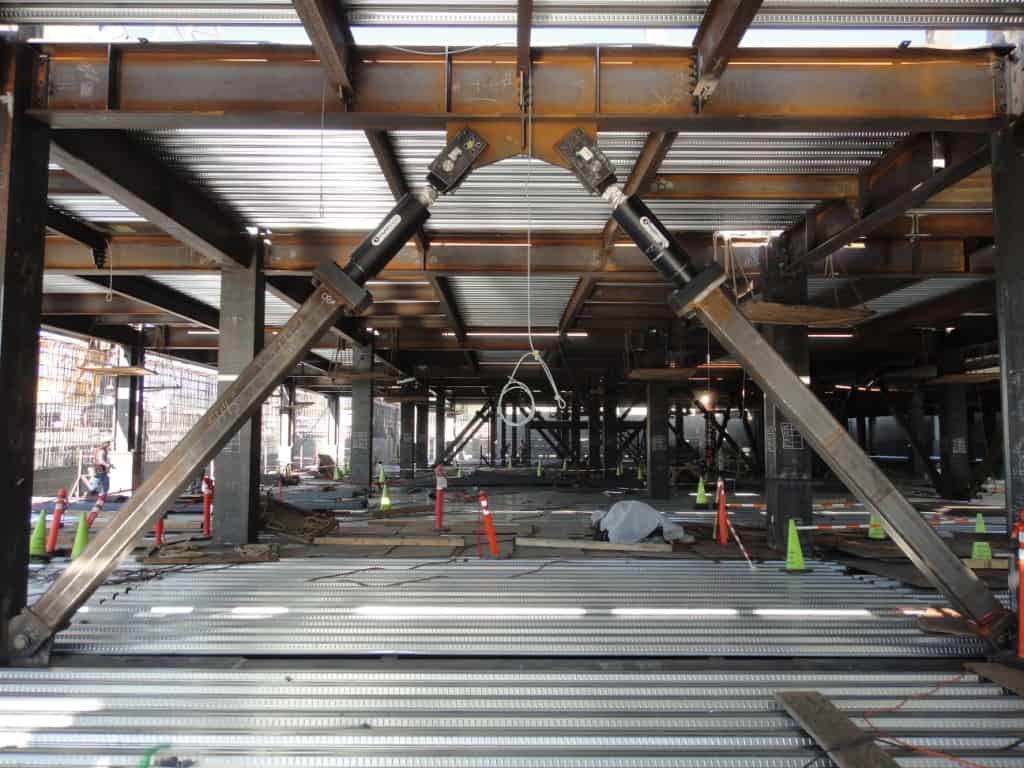Building safety and earthquake protection are important considerations for civil engineers when designing structures. Seismic dampers in buildings, a relatively new technology, can significantly reduce the risk of damage and destruction that could occur during an earthquake or other seismic event. In this article, we look at the basic principles of seismic dampers, their role in building construction, and their potential benefits for engineers.
Earthquake dampers are devices installed in buildings to protect them from damage during an earthquake or other seismic event. The damper is attached to the building at two points and is designed to absorb earthquake energy, thereby reducing damage to the building. Earthquake dampers can be used in both new and renovated buildings.
Seismic dampers are an important part of any earthquake-resistant structure. When combined with other earthquake resistant measures, such as foundation insulation and shock absorption systems, they can significantly reduce the damage a building suffers during an earthquake.
Seismic dampers in buildings are an important tool for civil engineers that can help improve the safety and performance of buildings during an earthquake. With the increasing use of seismic dampers, we can expect the damage caused to buildings during such events to decrease.
What are the different types of seismic dampers
Earthquake dampers are devices installed in buildings to protect them from damage during an earthquake or other seismic event. There are two main types of earthquake shock absorbers:
- Viscose shock absorber
- Viscoelastic shock absorbers
- Friction damper
- Vibration Absorber
- Compatible shock absorbers
- Magnetic Bumper
Viscose seismic damper
Viscous dampers are used to reduce shock waves passing through the ground during earthquakes. Shock absorbers typically consist of a heavy fluid contained in cylinders or tanks and are placed along an oil or gas pipeline. The fluid in each cylinder remains unchanged until subjected to a force. When an earthquake occurs, fluid moves from one end of the cylinder to the other, absorbing the energy of the seismic wave. The more viscous the liquid, the slower this energy is absorbed. Viscous seismic dampers have been used for over 30 years.


Image Courtesy: https://www.taylordevices.com/
Viscoelastic shock absorbers
A viscoelastic shock absorber is a device that absorbs shock by converting mechanical energy into another form of energy. The shock absorbers are made of polyurethane and are placed between the floor and the lining. The material can absorb repeated impacts through its structure and not just on the surface, as is the case with traditional suspensions.
Viscoelastic shock absorbers are used to eliminate vibrations caused by a structure or machine. Vibration is a problem for many structures because it can cause damage over time. These cushioned structures have rubber elements that absorb some of the vibrations to ensure they do not cause problems. There are two main types of viscoelastic shock absorbers.
Friction damper
Friction dampers are commonly used in industrial machinery and material handling equipment to reduce friction between two moving objects. These friction dampers are made from a variety of materials, from steel to urethane, as well as metals like aluminum, stainless steel, brass, and more.
The kinetic energy of moving parts is converted into thermal energy by friction dampers, mitigating sudden stops or avoiding excessively high vibration amplitudes. This type of earthquake damping in buildings is more economical compared to other methods.


Vibration Absorber
A vibration absorber is a device installed in buildings to protect them from vibrations. Vibration absorbers are essentially giant pendulums that slow down the vibrations of a vibrating building.
An earthquake damper or harmonic absorber are other names for a tuned mass damper. It is a mechanical vibration damping device fixed to buildings and consists of a mass mounted on one or more damped springs. For more information, see the coordinated mass damper article.
Compatible shock absorbers
Compliance dampers, commonly called metal dampers, are usually made of steel. To absorb the energy created when a building vibrates during an earthquake, they are designed to deform excessively. After an earthquake, compliance dampers are typically unable to return to their previous configuration.


What are the advantages of seismic dampers
Earthquake shock absorbers offer several benefits to civil engineers. First, they can help reduce the damage suffered by a building during an earthquake. Secondly, they can help extend the life of a building by reducing the stress the structure experiences during an earthquake. Third, they can help improve the safety of a building, reducing the risk of collapse or other damage.
Earthquake shock absorbers offer several benefits to civil engineers.
- First, they can help reduce the amount of damage a building suffers during an earthquake.
- Secondly, they can help extend the life of a building by reducing the stress the structure experiences during an earthquake.
- Third, they can help improve the safety of a building, reducing the risk of collapse or other damage.
How are earthquake shock absorbers used?
Earthquake dampers are used in both new and renovated buildings. In new construction, they are typically installed between the floors or walls of a building. During renovations, they are often installed on the roof or in the basement. Anti-seismic shock absorbers can also be used in combination with other earthquake-proof measures such as base insulation and shock absorption systems.
What are the limitations of seismic dampers
One of the limitations of seismic dampers is that they can only protect the building from a specific tremor. When the buffer reaches its maximum capacity, the building is vulnerable to further damage. Another limitation is that anti-seismic shock absorbers are only effective if they are properly designed and installed. Otherwise, they could increase the risk of damage to the building.

